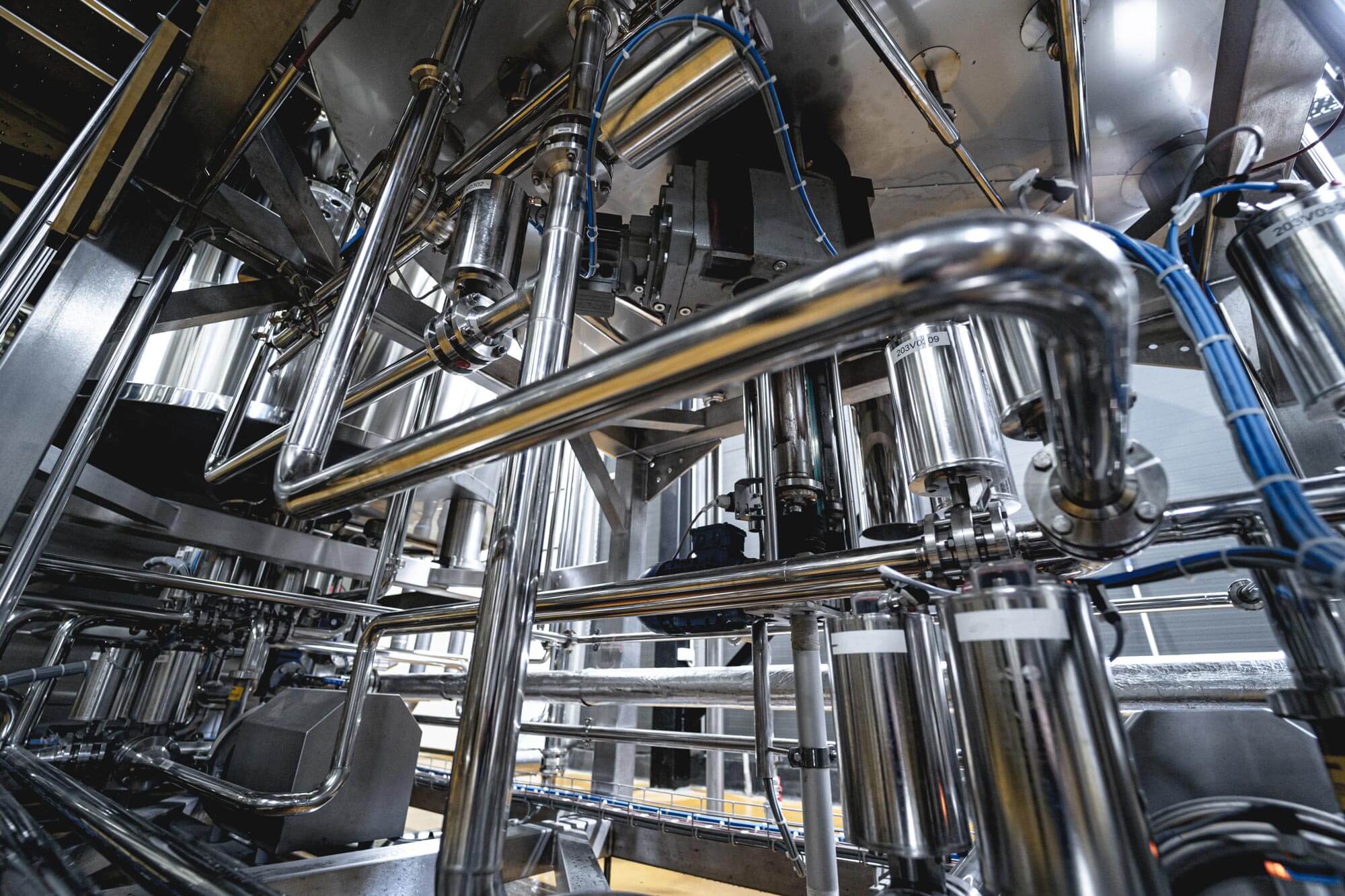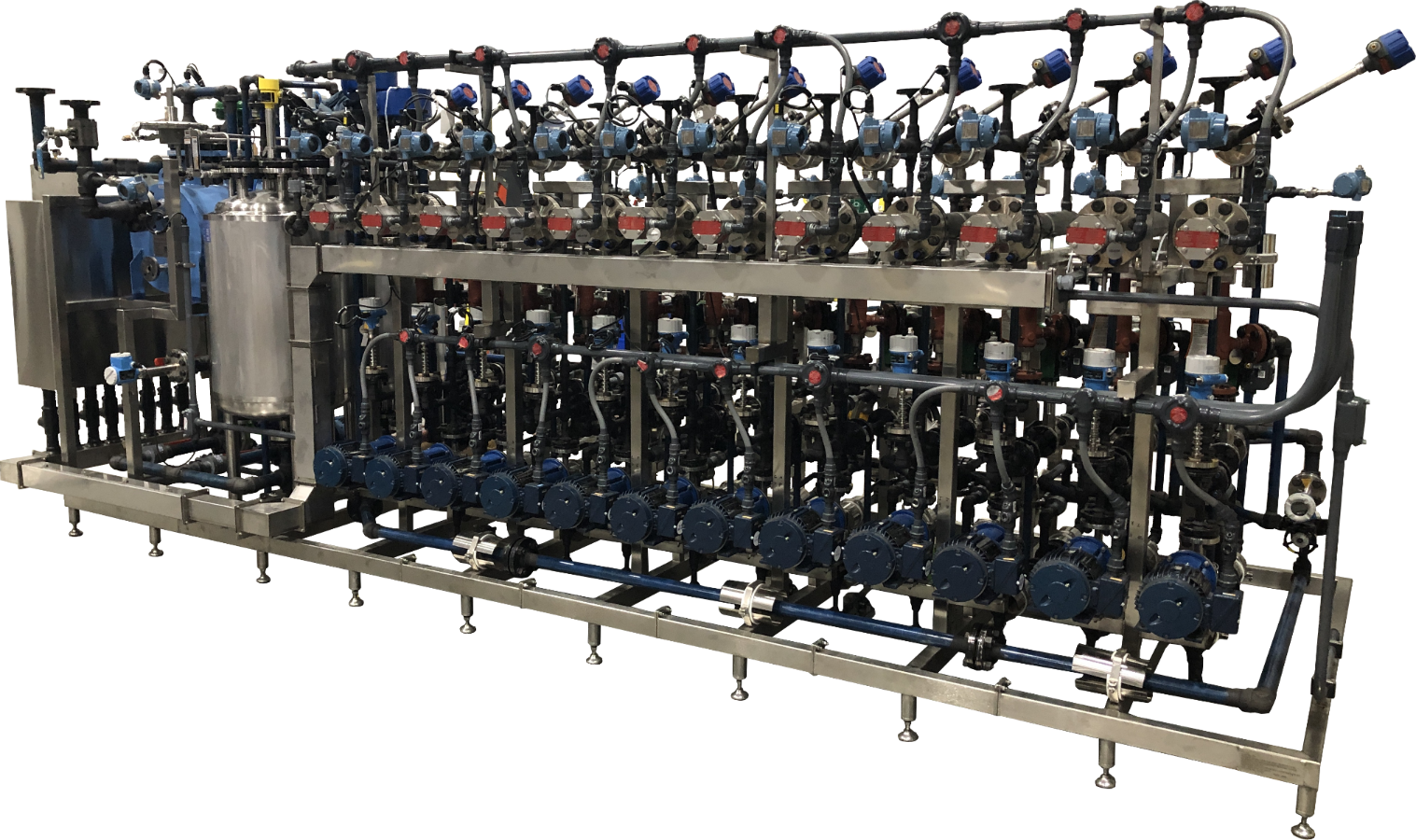Real-Time Monitoring: How DVS Heat Transfer Systems Enable Predictive Maintenance
Wiki Article
A Comprehensive Guide to Choosing the Right Heat Transfer Solutions for Your Demands
Selecting the appropriate Heat transfer system is necessary for functional effectiveness. Different systems deal with various needs, influenced by aspects such as temperature range and fluid kind. Understanding the principles behind Heat transfer, such as conduction, radiation, and convection, is crucial. In addition, evaluating power sources and upkeep techniques can influence long-lasting performance. A closer assessment of these considerations discloses exactly how to customize a system to details requirements. What should one prioritize in this complicated decision-making procedure?Recognizing Heat Transfer: Secret Concepts and Concepts
Although Heat transfer might appear like a simple idea, it includes a variety of principles that are basic for reliable system style. Comprehending these principles is crucial for designers and developers that aim to optimize thermal efficiency in various applications. Transmission, for example, includes the transfer of Heat via solid products, while convection describes the motion of Heat within fluids. Radiation, one more key concept, describes exactly how Heat can be transferred via electro-magnetic waves. Each of these systems plays an essential role in figuring out just how energy relocates within a system. By completely realizing these principles, specialists can make enlightened decisions, making certain that Heat transfer systems run successfully and fulfill the particular demands of their applications
Types of Heat Transfer Solutions: An Overview
Understanding the concepts of Heat transfer prepares for checking out the different sorts of Heat transfer systems offered. Heat transfer systems can be classified mostly right into 3 kinds: radiation, conduction, and convection. Transmission involves Heat transfer with strong products, counting on direct get in touch with between fragments. Convection, on the other hand, happens in fluids (liquids and gases) where the movement of the fluid itself facilitates Heat transfer. Radiation entails the transfer of Heat via electromagnetic waves and does not require a tool, permitting it to happen in a vacuum. Each sort of system has distinct attributes and applications, making it important for people and companies to carefully examine their details requirements when picking one of the most suitable Heat transfer service.Applications of Heat Transfer Equipments in Various Industries
Heat transfer systems play a vital function across different sectors, affecting effectiveness and item quality. In commercial production processes, they promote exact temperature control, while in food and drink processing, they ensure safety and preservation. Additionally, HVAC and climate control systems count greatly on efficient Heat transfer to preserve comfortable settings.Industrial Manufacturing Processes

Many industrial manufacturing processes depend heavily on effective Heat transfer systems to make the most of efficiency and enhance product quality. In industries such as metalworking, Heat exchangers play a necessary role in keeping excellent temperatures throughout welding, spreading, and creating. These systems ensure consistent Heat circulation, which is vital for attaining desired product homes. Likewise, in the chemical manufacturing market, Heat transfer systems promote exact temperature level control throughout reactions, influencing return and safety and security. In textile production, efficient Heat monitoring is important for dyeing and finishing processes, affecting color consistency and textile high quality. By choosing ideal Heat transfer innovations, manufacturers can boost energy performance and reduce functional prices, ultimately bring about a more competitive and lasting production environment.
Food and Beverage Handling
Effective Heat transfer systems are equally essential in the food and beverage handling market, where maintaining optimal temperature levels is vital for food safety and high quality. These systems play a vital duty in processes such as food preparation, sterilization, and pasteurization, making certain that products are safe for usage and retain their nutritional value. Heat exchangers, for example, efficiently transfer Heat in between liquids, enhancing power usage while lessening temperature level variations. Additionally, refrigeration systems are essential for maintaining perishable products and extending service life. The selection of Heat transfer innovation straight influences operational efficiency and product honesty, making it necessary for food and drink manufacturers to pick the appropriate systems tailored to their specific processing needs. This careful selection eventually adds to customer complete satisfaction and food safety and security.
Heating And Cooling and Environment Control
While lots of industries count on Heat transfer systems for performance, A/C (Heating, Ventilation, and Air Conditioning) plays a necessary function in keeping indoor climate control throughout different setups. These systems utilize Heat transfer concepts to manage temperature level, moisture, and air high quality, ensuring comfort and security in residential, industrial, and commercial settings. Properly developed cooling and heating systems enhance energy effectiveness, lower operational expenses, and lessen ecological impact. In business structures, for example, effective climate control adds to staff member efficiency and client satisfaction. In industrial applications, heating and cooling systems assist keep perfect conditions for devices procedure and item conservation. Selecting the right Heat transfer system is vital for meeting particular environment control needs and attaining total system efficiency.Assessing Power Resources for Heat Transfer Equipments
In evaluating power resources for Heat transfer systems, a contrast of renewable resource choices and nonrenewable fuel source factors to consider is important. Renewable resources, such as solar and wind, offer sustainable options that can decrease environmental impact. On the other hand, nonrenewable fuel sources remain prevalent as a result of their well-known facilities and energy density, prompting a mindful analysis of both options.Renewable Resource Options

Fossil Fuel Factors To Consider
Examining fossil gas considerations is necessary for the efficiency and sustainability of Heat transfer systems. Fossil gas, such as gas, oil, and coal, are standard energy resources that supply considerable Heat result, making them prominent selections for household and industrial applications. However, their ecological effect, DVS Heat Transfer Systems including greenhouse gas emissions and source exhaustion, raises problems. When selecting a warm transfer system, it is important to analyze the accessibility, cost, and regulative factors related to these gas. Additionally, the performance of nonrenewable fuel source systems need to be thought about, as greater efficiency can alleviate some ecological disadvantages. Inevitably, a well balanced technique weighing performance and sustainability can assist decision-makers toward the most ideal Heat transfer service for their details needs.Factors to Consider When Choosing a Warm Transfer System
Picking an appropriate Heat transfer system needs mindful consideration of various aspects that can considerably impact effectiveness and efficiency. One crucial variable is the operating temperature range, which dictates the products and style appropriate for the application. In addition, the kind of liquid made use of in the system-- whether gas or fluid-- affects Heat transfer performance and compatibility. The system's dimension and ability must straighten with the specific needs of the operation to avoid inefficiencies. Energy resource availability is also important, influencing operating expenses and sustainability. The installation setting, consisting of area constraints and ease of access for maintenance, plays a significant role in system option. Ultimately, regulatory compliance and safety criteria have to be taken into consideration to ensure the system satisfies all legal needs.Maintenance and Efficiency Optimization for Heat Transfer Systems
Maintaining Heat transfer systems is crucial for making certain optimal efficiency and long life. Routine maintenance tasks, such as cleaning up Heat exchangers and evaluating insulation, help prevent performance losses because of fouling and thermal bridging. In addition, keeping an eye on system parameters, consisting of pressure and temperature level, permits early discovery of abnormalities, decreasing downtime and expensive repairs. Carrying out a preventive upkeep schedule can enhance performance and extend the lifespan of parts. Updating to innovative control systems can boost operational effectiveness by adjusting to differing loads and conditions. By prioritizing maintenance and effectiveness optimization, drivers can attain lowered energy intake, reduced functional expenses, and improved general system reliability, inevitably resulting in better resource use and a more sustainable operation.Future Patterns in Heat Transfer Technologies
As markets significantly focus on sustainability and power performance, future patterns in Heat transfer modern technologies are readied to undergo significant changes. Advancements such as innovative materials, including carbon nanotubes and nanofluids, assure enhanced thermal conductivity and effectiveness. Furthermore, the assimilation of renewable resource sources right into Heat transfer systems is getting momentum, promoting eco-friendly solutions. Smart innovations, including IoT sensors, are anticipated to transform tracking and control, allowing real-time data analysis for optimized performance. Moreover, the growth of compact and modular systems will certainly help with simpler installment and upkeep, satisfying diverse applications. These innovations show a change towards even more lasting, reliable, and versatile Heat transfer options, aligning with worldwide energy goals and environmental requirements.
Frequently Asked Inquiries
What Are the Environmental Impacts of Heat Transfer Systems?
The environmental influences of Heat transfer systems can consist of greenhouse gas exhausts, power usage, and potential thermal air pollution. In addition, improper disposal of materials and ineffectiveness can add to resource depletion and ecosystem interruption.How Do I Calculate the Cost-Effectiveness of a Warm Transfer System?
To calculate the cost-effectiveness of a warm transfer system, one need to analyze initial expenses, functional costs, maintenance requirements, and power performance, contrasting these aspects versus the expected life expectancy and performance of the system.Can Heat Transfer Systems Be Made Use Of in Residential Setups?
Heat transfer systems can indeed be made use of in property setups. They give reliable home heating and cooling down remedies, making homes more comfy while potentially reducing energy costs. Their versatility enables for various applications in residential environments.What Security Rules Relate To Heat Transfer Systems?
Safety and security policies for Heat transfer systems commonly include guidelines on installment, operation, and upkeep. Conformity with neighborhood building ordinance, manufacturer requirements, and market standards is important to guarantee secure and effective system efficiency in numerous applications.How Do Different Products Affect Heat Transfer Performance?

Transmission, for circumstances, involves the transfer of Heat through solid materials, while convection refers to the motion of Heat within liquids. Understanding the principles of Heat transfer lays the foundation for discovering the various kinds of Heat transfer systems offered. Heat exchangers, for circumstances, successfully move Heat in between liquids, enhancing power usage while minimizing temperature level variations. In examining power resources for Heat transfer systems, a comparison of renewable energy alternatives and fossil gas considerations is vital. Steels, such as copper and aluminum, conduct Heat effectively, whereas insulators like rubber and glass slow down Heat circulation.
Report this wiki page